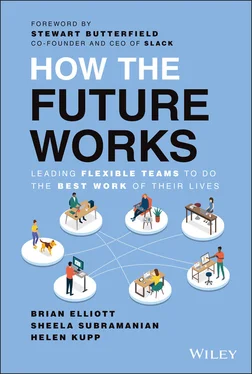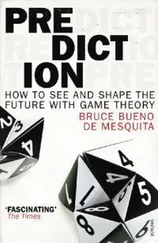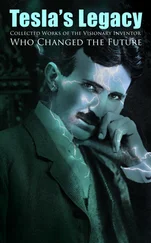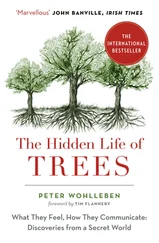Brian Elliott - How the Future Works
Здесь есть возможность читать онлайн «Brian Elliott - How the Future Works» — ознакомительный отрывок электронной книги совершенно бесплатно, а после прочтения отрывка купить полную версию. В некоторых случаях можно слушать аудио, скачать через торрент в формате fb2 и присутствует краткое содержание. Жанр: unrecognised, на английском языке. Описание произведения, (предисловие) а так же отзывы посетителей доступны на портале библиотеки ЛибКат.
- Название:How the Future Works
- Автор:
- Жанр:
- Год:неизвестен
- ISBN:нет данных
- Рейтинг книги:5 / 5. Голосов: 1
-
Избранное:Добавить в избранное
- Отзывы:
-
Ваша оценка:
- 100
- 1
- 2
- 3
- 4
- 5
How the Future Works: краткое содержание, описание и аннотация
Предлагаем к чтению аннотацию, описание, краткое содержание или предисловие (зависит от того, что написал сам автор книги «How the Future Works»). Если вы не нашли необходимую информацию о книге — напишите в комментариях, мы постараемся отыскать её.
when
where
How the Future Works: Leading Flexible Teams to Do The Best Work of Their Lives
How the Future Works
How the Future Works
How the Future Works — читать онлайн ознакомительный отрывок
Ниже представлен текст книги, разбитый по страницам. Система сохранения места последней прочитанной страницы, позволяет с удобством читать онлайн бесплатно книгу «How the Future Works», без необходимости каждый раз заново искать на чём Вы остановились. Поставьте закладку, и сможете в любой момент перейти на страницу, на которой закончили чтение.
Интервал:
Закладка:
That desire for flexibility in when people work, as well as where , is one of the reasons we think terms like “hybrid” or “remote-first” aren't the right fit—they focus on location. To enable real flexibility, companies need to adopt a Digital-First mindset, recognizing that the only way to give people the schedule flexibility they need is to leverage digital tools that allow them freedom, not just in where they work, but when.
Moving to a Digital-First approach means putting as much thought and effort into the digital infrastructure that supports productivity and collaboration as we once did into our office buildings, desk configurations, conference rooms, and floor plans. Making this change is about more than just a switch in emphasis: Like anything else, if not executed well—if you don't get the how part right—you won't be successful.
Digital-First: n .
A flexible work model that requires companies to make a switch, from a mode of operations where digital technologies supplemented in-person communication as a way of getting work done, to one where in-person supplements the digital, in order to build a more connected and inclusive way of working for everyone. Digital-First means embracing a truly flexible way of working, one in which people are given the freedom of choice—in terms of both when and where they work—in order to unlock their potential and enable their best performance.
The How: Flexibility within a Framework
Digital-First does mean giving your people the freedom and autonomy to do their best work from a place and on a schedule that best suits their needs, but the idea of employee freedom can scare off some leaders. That is, until they understand that flexible work isn't about total freedom or unstructured chaos. That's not something employers would be willing to give, but it's also not what workers are really asking for. While most don't want to be in the office from 9:00 a.m. to 5:00 p.m. (or worse, 8:00 a.m. to 8:00 p.m.) five days a week, they still want some structure in their workday. In fact, nearly two-thirds (65.6%) said they want a balance between full flexibility and a predictable framework.
What businesses need in order to be successful is to create what we call flexibility within a framework to support their Digital-First work model. They don't realize that for flexible work to really work, it requires much more than just a policy statement. It requires a significant change in your company culture, processes, and infrastructure. Too often companies miss the bigger picture and the larger opportunity.
That could have been true for Dropbox. Their leadership team was on board with the concept of location flexibility in the beginning, but there was hesitation about schedule flexibility and what that would mean in terms of collaboration among their people. The pandemic forced them to experiment, and the company found something that worked. (They call theirs “virtual first,” but it's a good example of a Digital-First strategy.) Then they created a framework of policies, tools, and infrastructure to support it.
Dropbox took a big bet on something that was untested and unfamiliar to them. It required significant changes and investment, but the improvements they've seen in recruitment, onboarding, and diversity speak for themselves. And that's just the beginning for them. As they continue to experiment and adjust to what works, they are sure to see more of the benefits that flexible work can bring, providing them with a real competitive advantage.
This is where the next part of this book comes in. You don't have to take a big bet on something that's completely untested. Through Future Forum's original research and work with companies that are paving the way, we have distilled what companies need to do to make the switch to Digital-First into seven key steps that will get you there. They will help you reimagine how the future works, and then design a framework that supports your new vision and drives results. It's not a quick-and-easy process, but as you saw with Dropbox—and as you will see with the many other company examples in this book—it's well worth it.
Notes
1 1. Jones, S. (2021). ‘Dropbox's billionaire founder Drew Houston says the 40-hour office week is a thing of the past and the pandemic has changed work’, Business Insider, 28 September. Available at: https://www.businessinsider.com/dropbox-drew-houston-40-hour-office-work-week-is-over-2021-9(Accessed: 18 November 2021).
2 2. Future Forum (2021). ‘Future Forum pulse’, October 2021. Available at: https://futureforum.com/pulse-survey/(Accessed: 18 November 2021).
3 3. Deloitte (2021). ‘2021 Fortune/Deloitte CEO Survey’. Available at: https://www2.deloitte.com/us/en/pages/chief-executive-officer/articles/ceo-survey.html(Accessed: 18 November 2021).
4 4. Future Forum (2021). ‘Winning the war for talent in the post-pandemic world’, 15 June. Available at: https://futureforum.com/2021/06/15/future-forum-pulse/(Accessed: 18 November 2021).
5 5. Fuller, J. B. and Raman, M. ‘The caring company: How employers can cut costs and boost productivity by helping employees manage caregiving needs’. Available at: https://www.hbs.edu/managing-the-future-of-work/research/Pages/the-caring-company.aspx(Accessed: 18 November 2021).
6 6. Future Forum (2021). ‘Winning the war for talent in the post-pandemic world’, 15 June. Available at: https://futureforum.com/2021/06/15/future-forum-pulse/(Accessed: 18 November 2021).
7 7. Bersin, J. (2013). ‘Employee retention now a big issue: Why the tide has turned’, LinkedIn, 16 August. Available at: https://www.linkedin.com/pulse/20130816200159-131079-employee-retention-now-a-big-issue-why-the-tide-has-turned/(Accessed: 18 November 2021).
8 8. Gandhi, V. and Robison, J. (2021). ‘The “Great Resignation” is really the “Great Discontent”’, Gallup, 22 July. Available at: https://www.gallup.com/workplace/351545/great-resignation-really-great-discontent.aspx(Accessed: 18 November 2021).
9 9. Harter, J. (2021). ‘U.S. employee engagement rises following wild 2020’, Gallup, 26 February. Available at: https://www.gallup.com/workplace/330017/employee-engagement-rises-following-wild-2020.aspx(Accessed: 18 November 2021).
10 10. Chamorro-Premuzic, T. (2015). ‘Why group brainstorming is a waste of time’, Harvard Business Review, 25 March. Available at: https://hbr.org/2015/03/why-group-brainstorming-is-a-waste-of-time(Accessed: 18 November 2021).
11 11. Future Forum (2021). ‘Winning the war for talent in the post-pandemic world’, 15 June. Available at: https://futureforum.com/2021/06/15/future-forum-pulse/(Accessed: 18 November 2021).
12 12. Choudhury, P. (R.) (2021). ‘Our work-from-anywhere future’, Harvard Business Review, November–December. Available at: https://hbr.org/2020/11/our-work-from-anywhere-future(Accessed: 18 November 2021).
13 13. Lorenzo, R., Voigt, N., Tsusaka, M. and Krentz, M. (2018). ‘How diverse leadership teams boost innovation’, 23 January. Available at: https://www.bcg.com/en-us/publications/2018/how-diverse-leadership-teams-boost-innovation(Accessed: 11 January 2022).
14 14. JoshBersin.com(2015). ‘Why diversity and inclusion has become a business priority’, 7 December. Available at: https://joshbersin.com/2015/12/why-diversity-and-inclusion-will-be-a-top-priority-for-2016/(Accessed: 18 November 2021).
15 15. McKinsey & Company (2021). ‘Race in the workplace: The black experience in the U.S. private sector’, 21 February. Available at: https://www.mckinsey.com/featured-insights/diversity-and-inclusion/race-in-the-workplace-the-black-experience-in-the-us-private-sector(Accessed: 18 November 2021).
Читать дальшеИнтервал:
Закладка:
Похожие книги на «How the Future Works»
Представляем Вашему вниманию похожие книги на «How the Future Works» списком для выбора. Мы отобрали схожую по названию и смыслу литературу в надежде предоставить читателям больше вариантов отыскать новые, интересные, ещё непрочитанные произведения.
Обсуждение, отзывы о книге «How the Future Works» и просто собственные мнения читателей. Оставьте ваши комментарии, напишите, что Вы думаете о произведении, его смысле или главных героях. Укажите что конкретно понравилось, а что нет, и почему Вы так считаете.












